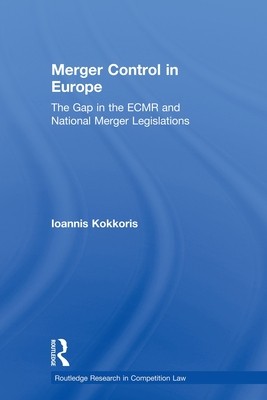
- We will send in 10–14 business days.
- Author: Ioannis Kokkoris
- Publisher: Routledge
- ISBN-10: 0415813255
- ISBN-13: 9780415813259
- Format: 15.6 x 23.4 x 1.7 cm, minkšti viršeliai
- Language: English
- SAVE -10% with code: EXTRA
Reviews
Description
This book addresses the phenomenon of mergers that may result in non-coordinated effects in oligopolistic markets. Such cases are sometimes referred to as non-collusive oligopolies, or gap cases and there is a concern that they might not be covered by the substantive test that some Member States use for merger assessment. Ioannis Kokkoris examines the argument that the European Community Merger Regulation (Regulation 4064/89) did not capture gap cases and considers the extent to which the revised substantive test in Regulation 139/2004 deals with the problem of non-collusive oligopolies.
The author identifies actual examples of mergers that gave rise to a problem of non-coordinated effects in oligopolistic markets, both in the EU and in other jurisdictions, and analyses the way in which these cases were dealt with in practice. The book considers legal systems such as United Kingdom, United States, Australia and New Zealand. The book investigates whether there is any difference in the assessment of non-collusive oligopolies between the various substantive tests which have been adopted for merger assessment in various jurisdictions. The book also looks at the various methodological tools available to assist competition authorities and the professional advisers of merging firms to identify whether a particular merger might give rise to anticompetitive effects and explores the type of market structure in which a merger is likely to lead to non-coordinated effects in oligopolistic markets.
EXTRA 10 % discount with code: EXTRA
The promotion ends in 21d.04:19:25
The discount code is valid when purchasing from 10 €. Discounts do not stack.
- Author: Ioannis Kokkoris
- Publisher: Routledge
- ISBN-10: 0415813255
- ISBN-13: 9780415813259
- Format: 15.6 x 23.4 x 1.7 cm, minkšti viršeliai
- Language: English English
This book addresses the phenomenon of mergers that may result in non-coordinated effects in oligopolistic markets. Such cases are sometimes referred to as non-collusive oligopolies, or gap cases and there is a concern that they might not be covered by the substantive test that some Member States use for merger assessment. Ioannis Kokkoris examines the argument that the European Community Merger Regulation (Regulation 4064/89) did not capture gap cases and considers the extent to which the revised substantive test in Regulation 139/2004 deals with the problem of non-collusive oligopolies.
The author identifies actual examples of mergers that gave rise to a problem of non-coordinated effects in oligopolistic markets, both in the EU and in other jurisdictions, and analyses the way in which these cases were dealt with in practice. The book considers legal systems such as United Kingdom, United States, Australia and New Zealand. The book investigates whether there is any difference in the assessment of non-collusive oligopolies between the various substantive tests which have been adopted for merger assessment in various jurisdictions. The book also looks at the various methodological tools available to assist competition authorities and the professional advisers of merging firms to identify whether a particular merger might give rise to anticompetitive effects and explores the type of market structure in which a merger is likely to lead to non-coordinated effects in oligopolistic markets.


Reviews